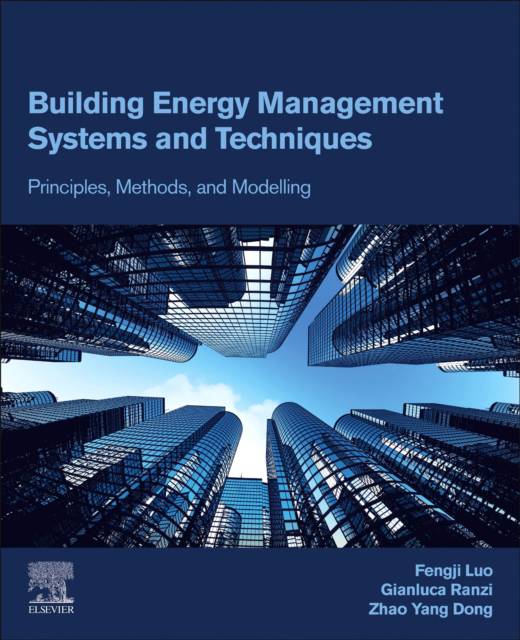
- Afhalen na 1 uur in een winkel met voorraad
- Gratis thuislevering in België vanaf € 30
- Ruim aanbod met 7 miljoen producten
- Afhalen na 1 uur in een winkel met voorraad
- Gratis thuislevering in België vanaf € 30
- Ruim aanbod met 7 miljoen producten
Zoeken
Building Energy Management Systems and Techniques
Principles, Methods, and Modelling
Fengji Luo, Gianluca Ranzi, Zhao Yang Dong
Paperback | Engels
€ 150,95
+ 301 punten
Omschrijving
Building Energy Management Systems and Techniques: Principles, Methods, and Modelling presents basic concepts, methodologies, modeling techniques, and fundamental design schemes of building energy management systems. Covering the latest developments and methodologies from academia and industry, the book brings together energy management, demand response, evolutionary computation, and fundamental programming.
The authors explore the basic concepts related to building energy management systems and put them into the context of smart grids, demand response and demand-side management, internet of things, and distributed renewable energy. Advanced topics provide the reader with an understanding of various energy management scenarios and procedures for modern buildings in an automatic and highly renewable-penetrated building environment. This includes a range of energy management techniques for building-side energy resources such as battery energy storage systems, plug-in appliances, and HVAC systems. The fundamental principles of evolutionary computation are covered and applied to building energy management problems. The authors also introduce the paradigm of occupant-to-grid integration and its implementation through personalized recommendation technology to guide the occupants' choices on energy-related products and their energy usage behaviors, as well as to enhance the energy efficiency of buildings. The book includes several application examples throughout, illustrating for the reader the key aspects involved in the implementation of building energy management schemes.
Building Energy Management Systems and Techniques is an invaluable resource for undergraduate and postgraduate students enrolled in courses related to energy-efficient building systems and smart grids and researchers working in the fields of smart grids, smart buildings/homes, and energy demand response. The book will be of use to professional electrical, civil, computing, and communications engineers, architects, and building energy consultants.
The authors explore the basic concepts related to building energy management systems and put them into the context of smart grids, demand response and demand-side management, internet of things, and distributed renewable energy. Advanced topics provide the reader with an understanding of various energy management scenarios and procedures for modern buildings in an automatic and highly renewable-penetrated building environment. This includes a range of energy management techniques for building-side energy resources such as battery energy storage systems, plug-in appliances, and HVAC systems. The fundamental principles of evolutionary computation are covered and applied to building energy management problems. The authors also introduce the paradigm of occupant-to-grid integration and its implementation through personalized recommendation technology to guide the occupants' choices on energy-related products and their energy usage behaviors, as well as to enhance the energy efficiency of buildings. The book includes several application examples throughout, illustrating for the reader the key aspects involved in the implementation of building energy management schemes.
Building Energy Management Systems and Techniques is an invaluable resource for undergraduate and postgraduate students enrolled in courses related to energy-efficient building systems and smart grids and researchers working in the fields of smart grids, smart buildings/homes, and energy demand response. The book will be of use to professional electrical, civil, computing, and communications engineers, architects, and building energy consultants.
Specificaties
Betrokkenen
- Auteur(s):
- Uitgeverij:
Inhoud
- Aantal bladzijden:
- 332
- Taal:
- Engels
Eigenschappen
- Productcode (EAN):
- 9780323961073
- Verschijningsdatum:
- 22/02/2024
- Uitvoering:
- Paperback
- Formaat:
- Trade paperback (VS)
- Afmetingen:
- 188 mm x 234 mm
- Gewicht:
- 680 g

Alleen bij Standaard Boekhandel
+ 301 punten op je klantenkaart van Standaard Boekhandel
Beoordelingen
We publiceren alleen reviews die voldoen aan de voorwaarden voor reviews. Bekijk onze voorwaarden voor reviews.











